It’s such a common scenario, played out in homes around the world:
Ana adores zen neutral spaces, while her partner loves bright boho vibes that remind him of his childhood home.
Akiko feels happiest in bold primary colours, but her partner needs inky dark spaces to unwind after long days in bright hospital corridors.
Olun and his partner want their home to be chic and minimalist, but they have a child whose favourite colour is rainbow glitter.
Finding a romantic partner is already hard, finding one who shares your aesthetic style is highly unlikely. Having children who share your aesthetic style throughout their childhood is impossible. Inevitably, that dreaded thing - COMPROMISE - is required when creating a home that you share with other humans.
So, this week we’re looking at how two different styles might come together in an aesthetically pleasing way so that each person feels that their style is represented. I used Midjourney AI to blend two images to create a compromise style.
KITCHEN
Here we start with two kitchens that both have bold colour but the lime green one is more sedate than the playful yellow and red option. The compromise kitchen moves the yellow hue of Kitchen 2 more towards green and away from orange, and retains the more sombre and considered style of Kitchen 1.

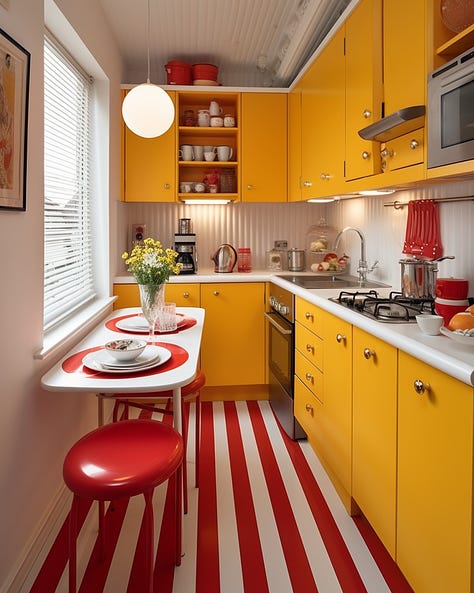

BEDROOM
Bedroom 1 is my kind of room. Bedroom 2 bores my eyes, but I know this look appeals to many :-). I think the compromise bedroom does a balanced job of respecting the calm zen vibe needed to satisfy the lover of Bedroom 2, while still including the yellow and plaid of Bedroom 1, and using darker art work to create more depth in the room.
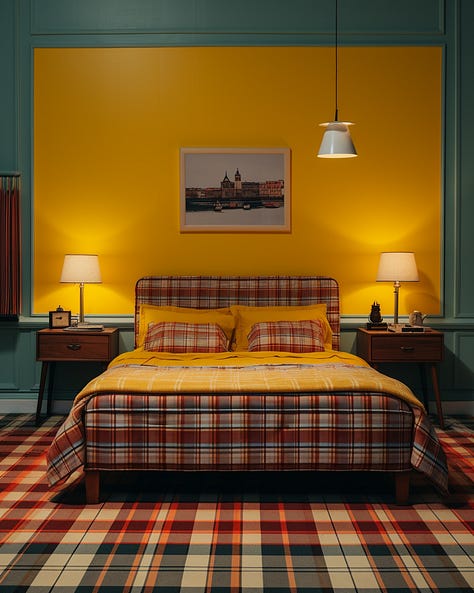


DINING ROOM
Dining Room 1 is a soft ode to quietness while Dining Room 2 has more energy. Here again I think the compromise room does a good job of being fair to both styles, giving space to each aesthetic. Some styles are easier to blend than others.


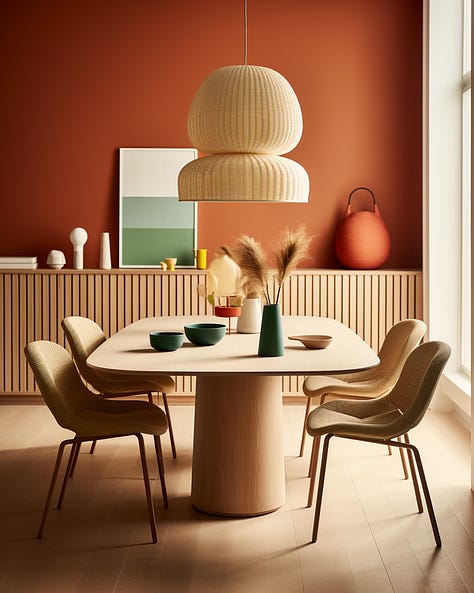
LIVING ROOM
Living Room 1 isn’t my preferred colour palette of course, but I do love a cement wall! The colour schemes of Living Room 1 and Living Room 2 could not be more different, but the styles are both quite stark. So this severity is retained in the compromise Living Room 3. When colour preferences are this different, I think one person often ends up feeling like they got the short end of the stick. The muted orange and purple cushions and art work of the compromise room are unlikely to satisfy the colour hungry lover of Living Room 2!



BATHROOM
Here we have two different but both strong colour palettes coming together in Bathroom 3. Each initial style sheds a colour and each initial style gets to keep a colour in the compromise room. Bathroom 1 gets its deep blue on the exterior of the compromise room bathtub, and Bathroom 2 keeps the light green on the compromise room walls, albeit in a slightly darker shade.
Though the colour scheme of the compromise room still works quite well, the very strong colour statement of both Bathroom 1 & 2 is lost. Bathroom C is a pleasant bathroom that says… kind of nothing. This a good example of why simply blending colours and styles is just a piece of the equation. In real life, in order to make a compromise attractive to either party, there needs to be some sort emotional connection to the design. A + B = C is logical, but if neither A or B cares about C, then the logic has no meaning behind it. And humans need meaning.
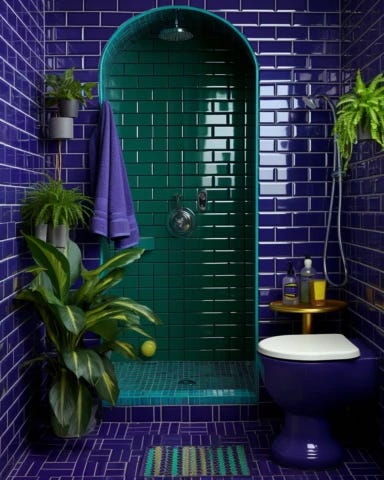
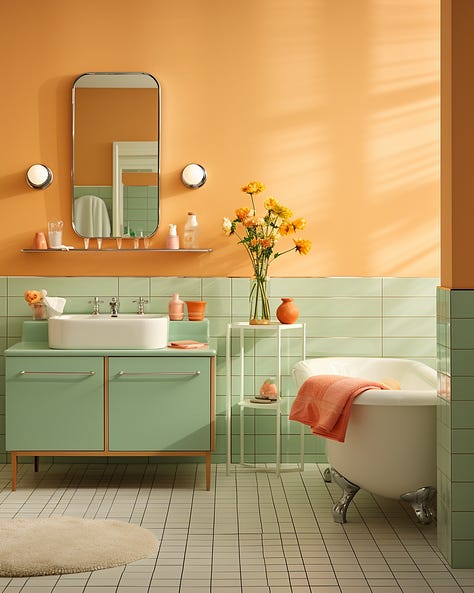
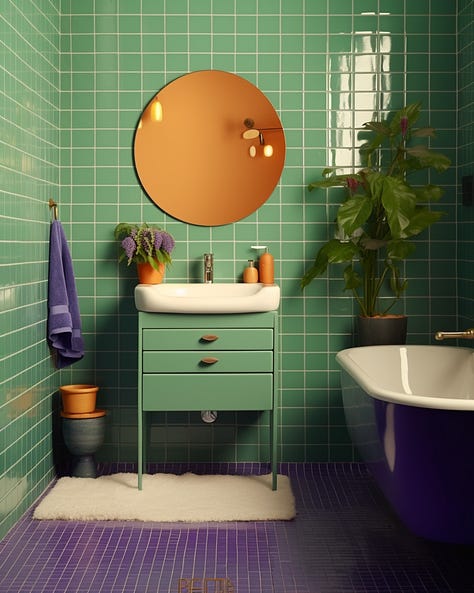
There are other ways to compromise on aesthetics at home of course. Each person might claim a room for themselves to decorate exactly as they wish, for example, with each room telling the story of a different member of the family. And though the result could look rather disjointed, for some people this might be preferable to compromising on their style.
And for certain rooms, no compromise is required at all. In children’s bedrooms for example, I am of the strong opinion that children should not be held to the aesthetic preferences of their parents. Close the door and let them love their rainbow glitter.
In real life, making design compromises at home work requires a lot of effective communication so everyone understands which elements of ‘home’ are important to whom and why. It requires some skilled design hands and mature inhabitants who know how to share - preconditions that are definitely not always in place!
Doing the blended style exercise reminded me of a scene from the 1964 movie, My Fair Lady, when Professor Higgins sings 'I'm An Ordinary Man' to explain why he doesn’t want “a woman in his life”:
…Make a plan and you will find
she has something else in mind.
And so rather than do either
you do something else that neither likes at all.
Compromise is hard. In shared living situations, it's unfortunately often necessary. Alas.
This idea was inspired by my recent interview on The Great Indoors Podcast, with its two FABULOUS hosts, Sophie Robinson and Kate Watson-Smyth. I had to hold myself back from fan-girl gushing! They asked me to use AI to create images of their styles blended - you can see the results on Instagram here. My interview was for their paid Insiders group, so if you fancy having a listen, you could sign up to do that here.
How have you managed different design styles in your family? Any tips to share?
Thank you for reading!
-Vanessa :-)

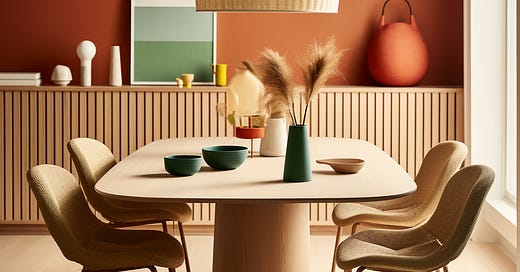


Thanks, Vanessa. Have you ever tried prompting MJ with a "as in the picture at this URL?" I haven't but I've seen others do that.
This is fascinating and a great solution to a complicated brief :)